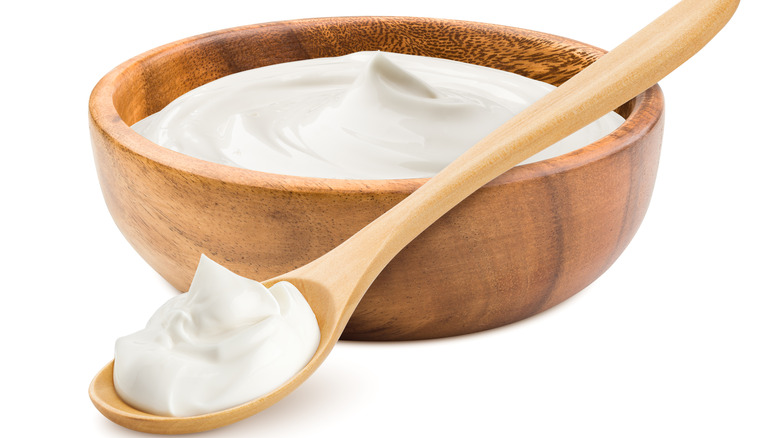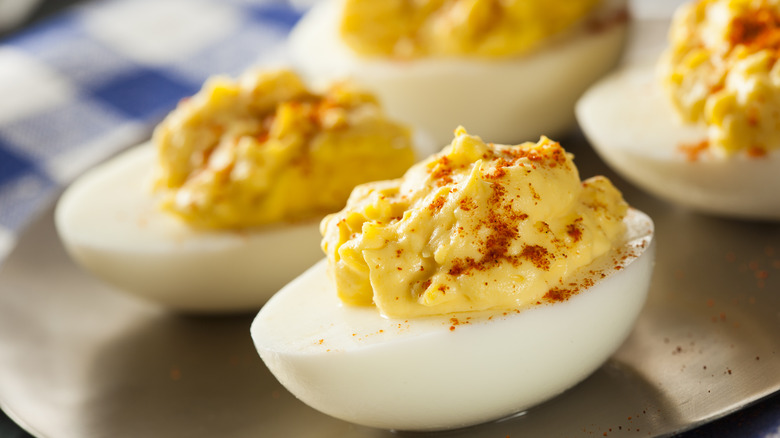Make The Creamiest Deviled Eggs With One Major Ingredient Swap
Deviled eggs are the perfect year-round treat, equally welcome at a summertime cookout as at a holiday buffet spread. They're little vessels of customizable joy. Depending on your preferences or to whom you're serving them, you can stick to a classic deviled eggs recipe, or try your hand with more unexpected additions to your deviled eggs. Creamy avocado, warm spice blends like garam masala or curry powder, or salty anchovies are all lovely mix-ins for the filling. For toppings, you can try candied bacon bits, salmon roe, or caviar if you're feeling fancy. No matter what your tastes are, deviled eggs are the perfect blank canvas for whatever you're craving.
Staple ingredients in a classic deviled egg filling, besides yolks, include mayonnaise and yellow mustard. However, if you're looking for a super creamy deviled egg filling with a little bit more tang than usual, reach for the sour cream instead of mayonnaise.
How much sour cream to use in deviled eggs
Sour cream is the perfect ingredient to take the place of mayonnaise in your deviled egg filling. It's light enough to provide the creaminess without masking the rich flavor of the egg yolks, or any other fun ingredients you've added. The tangy flavor is often a nice complement, too. You'll need ½ cup of full-fat sour cream for a dozen hard-boiled eggs. For the ultimate creamy deviled egg filling, try whipping it up in a food processor. After cooking your eggs and carefully separating the yolks, add them to the food processor with the sour cream and any other filling ingredients, then pulse until blended to a perfectly smooth and creamy consistency.
There is one risk of seeking out the creamiest filling — if you add too many ingredients or those that are too watery, you might make your filling runny, causing the deviled eggs to weep. And while there are tips out there to prevent your deviled eggs from weeping, if you end up accidentally making your filling too loose — don't worry — it's fixable. Powdered mashed potato can fix a runny deviled egg mixture, as can adding more egg yolks.
How to prepare the best boiled eggs
Some of the common mistakes when making deviled eggs have easy fixes, especially if you do the prep work beforehand. A lot has to do with which eggs you choose, and how you cook them. To make sure the hard-boiled eggs peel cleanly, use older eggs. The fresher they are, the more difficulty you'll have peeling the shell off. You can tell the age of the egg by covering it in water; fresh eggs will lay flat while older eggs will stand up. And, before you boil them, let them come to room temperature to ensure they cook evenly. About 30 minutes out of the refrigerator won't do them any harm, and your deviled eggs will be better for it. A good rule of thumb for cooking time is around ten to 12 minutes after the water has come to a boil.
If it's more convenient, don't be afraid of turning the making of deviled eggs into a multi-day process. Hard-boiled eggs keep very well in the refrigerator, and the full recipe can be finished over the next day or two.


